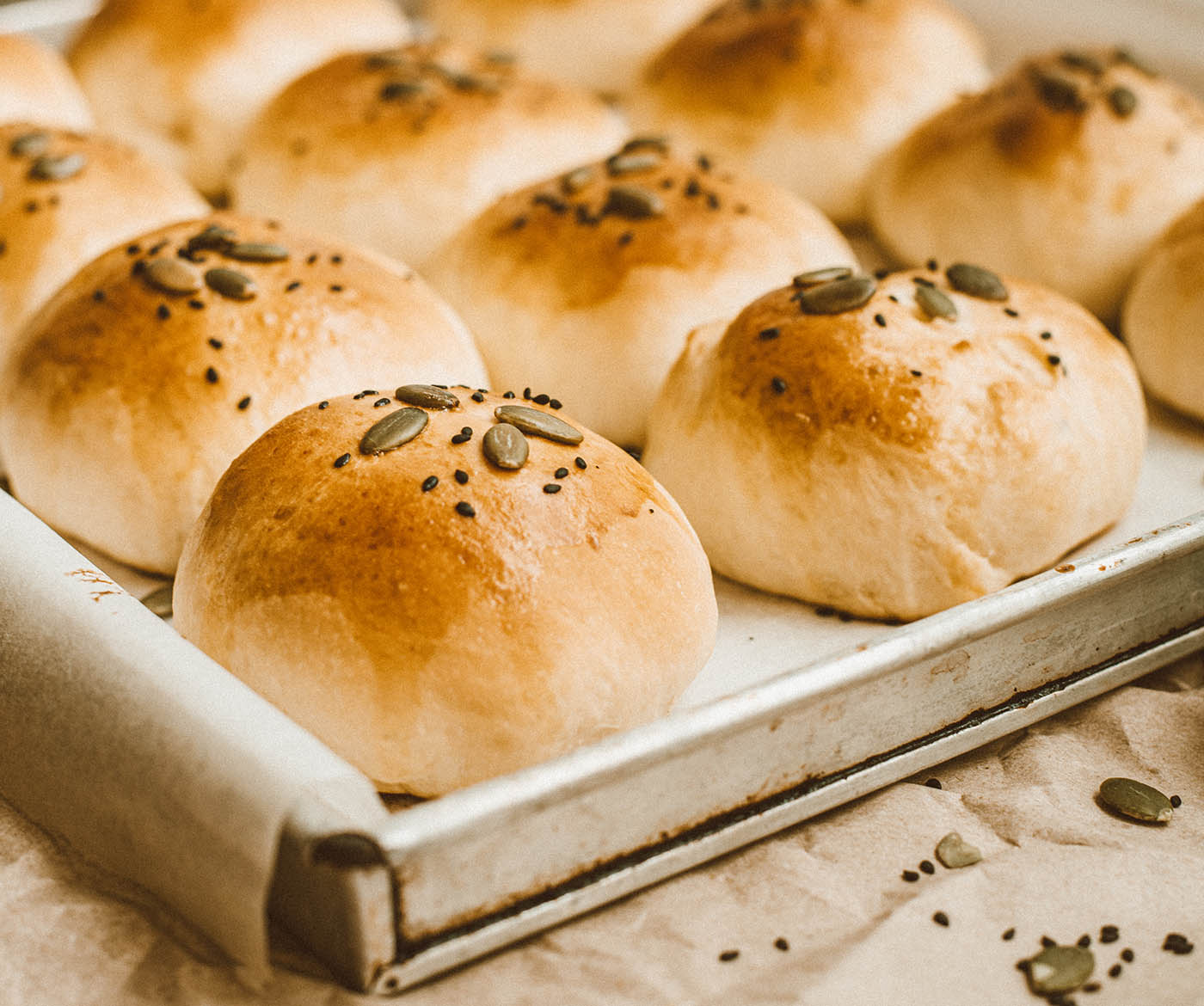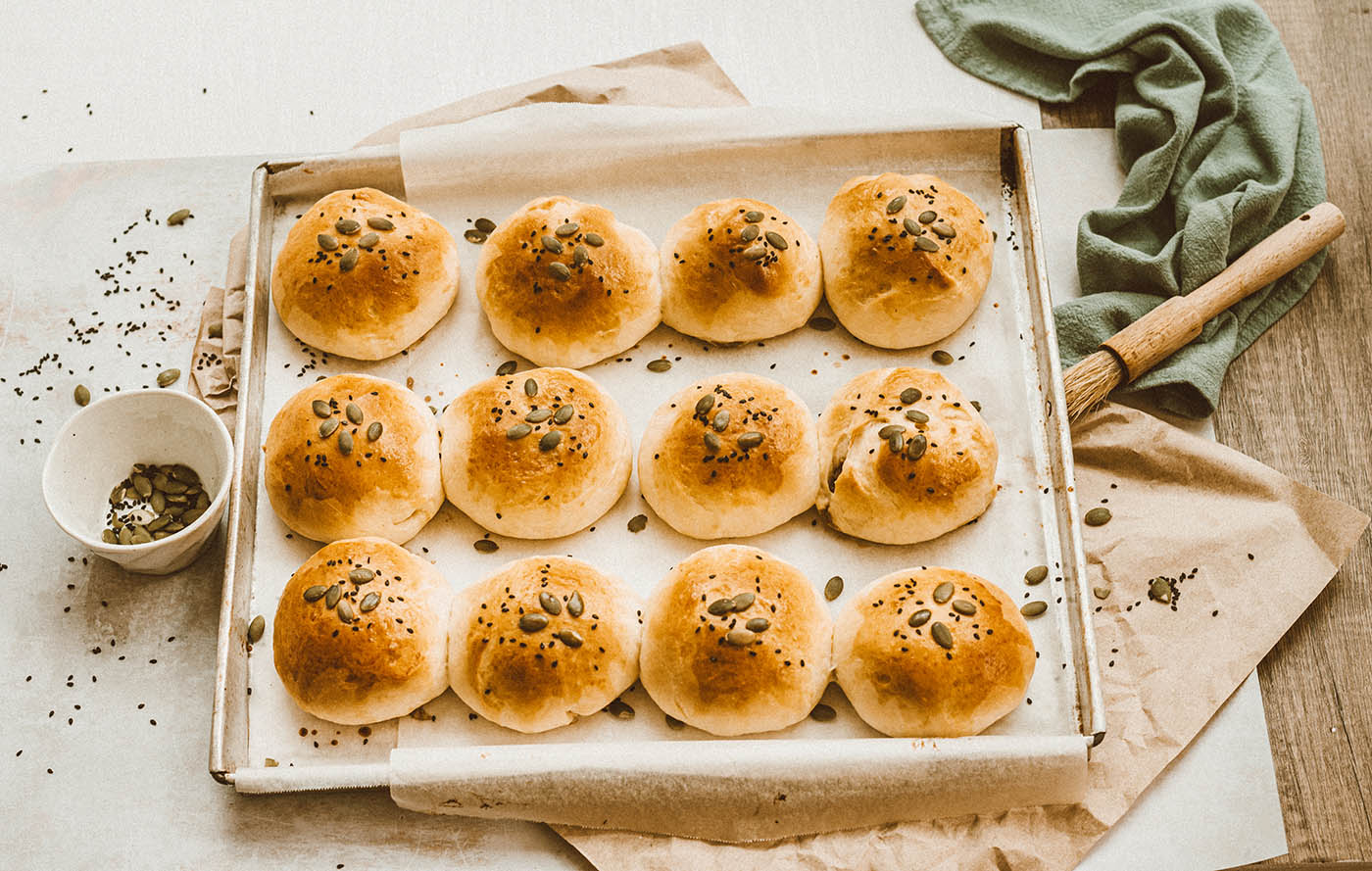I’ve been eager to bake Pan de Coco ever since starting the Panadera series. This bread holds a special place in my heart. Growing up, visits to my grandma’s house always included a trip to the sari-sari store across the narrow footpath, where we’d grab a handful of pan de coco. The lola who sold them had a unique twist—she kept the coconut filling separate from the buns—but they were still irresistibly delicious.
Pan de Coco, like many Filipino breads, has roots in the Spanish colonial era. Its name translates to “coconut bread,” perfectly describing its sweet coconut-stuffed goodness.
Interestingly, other former Spanish territories like the Dominican Republic and Honduras also have their versions of pan de coco. But instead of a filling, their recipes incorporate coconut milk and grated coconut directly into the dough, giving the bread a different twist.

You might notice these pan de coco buns look a little different from the ones you’d find at a typical bakery. That’s because I decided to top them with pumpkin and toasted sesame seeds—no special reason, just a fun way to add some visual and textural flair. The seeds pop beautifully against the golden crust and bring a satisfying crunch to every bite. I originally planned to use sliced almonds, but since I didn’t have any, I improvised. No toppings? No problem—these buns are just as delicious without them!
What is Tangzhong?
Along with topping these buns with seeds, I incorporated tangzhong into the recipe. Back on my old blog, I couldn’t stop raving about this method—also known as water roux—and how it keeps bread soft and fresh for days. But what exactly is tangzhong?
Popularized by a Taiwanese blogger, tangzhong caught my attention during a deep dive into Chinese blogs in search of the fluffiest milk bread recipe.
The process is simple: mix a small amount of flour with a generous amount of liquid (typically milk or water) and heat it over low to medium heat until it thickens into a paste. This step locks in moisture, ensuring the dough bakes into bread that’s wonderfully soft and never dense.

I absolutely love using the tangzhong method. Kneading sticky dough used to be a challenge, but with tangzhong in the mix, the dough becomes so much easier to handle. It doesn’t cling to the sides of the bowl, even with the humidity in my house—which, by the way, is no joke! The temperature here usually hovers between 28°C and 35°C, and I can’t remember the humidity ever dropping below 50%.
I also gave the dough a rest after incorporating the tangzhong, and it made such a difference. The dough relaxed beautifully, making it much easier to achieve that perfect elastic texture for shaping. Honestly, I think this method is a keeper for all my future bread-baking adventures.
I got a filling…
Now, let’s get to the star of this bread: the filling. Pan de Coco gets its name from the sweet coconut and brown sugar filling nestled inside each bun.
While most recipes use desiccated coconut, I went with freshly grated coconut for my version. The fresh coconut meant I could cut back on the milk and sugar since it’s naturally moist and flavorful.
No freshly grated coconut? No worries! You can substitute desiccated coconut—just remember to double the milk and sugar to compensate, as dry coconut absorbs more liquid.
This recipe makes enough filling for about 12 tablespoons. I’ve tried adding more than a tablespoon per bun, and while it works, sealing the dough becomes trickier. A tablespoon is just right for a perfect balance between filling and bread. If you have extra coconut, feel free to double the filling and enjoy the leftovers on their own—they’re so delicious!
Let’s get to baking!
Pan de Coco is more than just a bread—it’s a slice of nostalgia wrapped in soft, fluffy dough and filled with sweet coconut goodness. Whether you’re using fresh or desiccated coconut, or even experimenting with toppings, this recipe is as versatile as it is delicious. I hope this guide inspires you to bake your own batch and bring a little taste of tradition into your kitchen. Let me know how it turns out—I’d love to hear about your Pan de Coco adventures!



